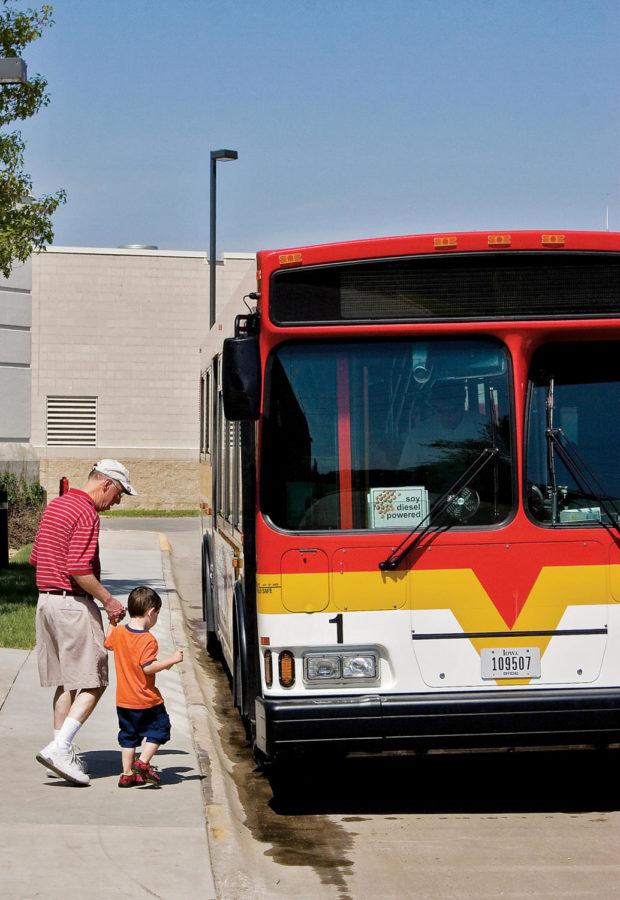CyRide faces fuel budget crisis
CyRide’s increase in fare for all riders other than students can cause repercussions for the community. With the recent shooting down of provided fare free riding for K-12 students, the Ames community has marginalized its riders.
May 30, 2011
CyRide could go as much as $55,000 over its fuel budget by the end of the fiscal year on June 30.
Sheri Kyras, director of transit, said CyRide determines its fuel budget 12 months in advance, basing it on historical data and price projections. Fuel prices, however, are hard to predict, which is why CyRide now faces a financial shortfall.
The next fiscal year will not see much improvement.
“Next year we have eight months out of 12 under a fuel contract . . . . We will be paying an average of about $3.05 per gallon,” said Kyras. “The problem is that our budget for next year is $2.50 a gallon, so we know we [will be] significantly over in those eight months.”
Depending on fuel prices during the following four months, CyRide could overdraw its reserves by as much as $250,000.
CyRide’s Transit Board reserves a portion of its total budget for addressing emergencies like the current deficit. This “closing balance” is normally 15% of the budget, but that number now hovers around 8%. Kyras said the board does not wish to draw any more money from this balance because members want to be able to address others emergencies if they arise. Thus, CyRide is looking elsewhere for the needed funds.
Kyras said the board had a number of options for mitigating the effects of the shortfall.
“We’re looking internally at the budget to see what we could do to try and reduce our expenses,” Kyras said.
However, Kyras said inter-departmental cuts will not generate enough extra money to make up for the deficit.
“Externally, the two places we have to look are to either increase our fares to generate more revenue, or to reduce our fares even more — which is to cut service,” Kyras said. “These are the two things that we’re asking the public to help us figure out.”
A third option involves dipping into CyRide’s trust fund, which comes from student fees and is maintained by the Government of the Student Body.
“Students have about a million dollars in the bank, so they could draw down from that balance as opposed to increasing fares,” said Kyras.
“The initial thought was not to increase [fares] because of this large balance,” said Kyras.
CyRide’s recently purchased fleet of hybrid buses have thus far done little to reduce fuel costs.
“[They are] brand new, and there are always bugs to work out when you get new technology,” said Kyras. “In mid-June the manufacturer of the transmissions will be in with a new programming fix that’s supposed to help increase [fuel efficiency].”
“We’re hoping that within the next 30 to 60 days we’ll start seeing more improvement in the hybrid system,” Kyras said. The programming fix could save as much as $30,000 in fuel costs.
The majority of CyRide’s $8.2 million budget comes from the GSB. The rest comes from Iowa State University, the City of Ames and a number of different state and federal entities.
A public meeting on the budget shortfall will be held at 5:30 p.m. on June 2 at CyRide’s headquarters on 1700 University Blvd. Students who are not in Ames this summer are encouraged to take an online survey. A second meeting is scheduled for August, after students have returned to Ames. No changes in fares or services will be implemented before Jan. 2012.
“Students have some options and they’re in a nice position to weigh what they want to do,” Kyras said.







